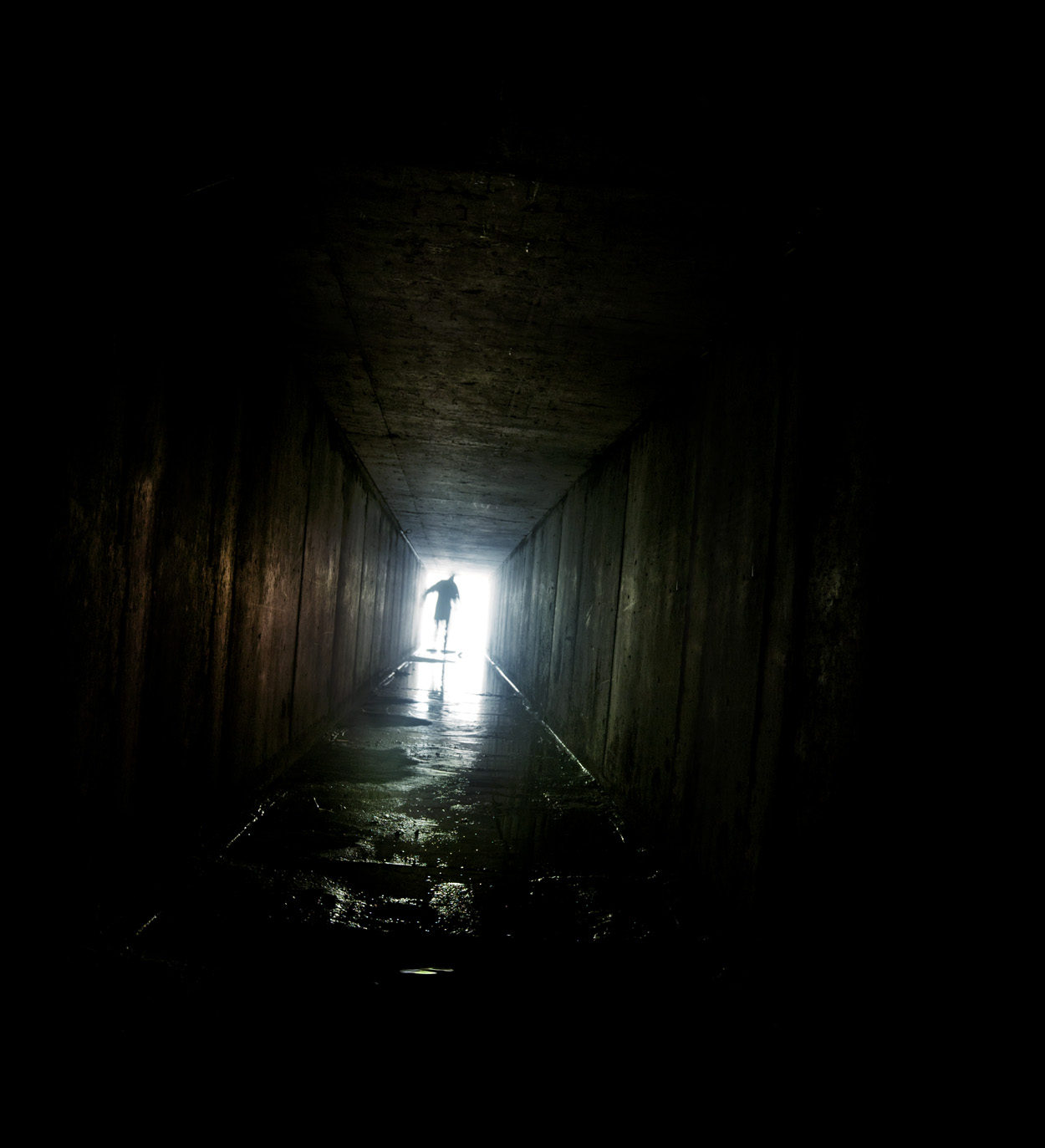HIDING BENEATH US
WRITTEN BY Hayley Flynn
IMAGES BY Andrew Brooks
READING TIME: 3 minutes
Trafford’s cold war bunker under the town hall
The entrance to the bunker led to a series of rooms and passageways with concrete walls and steel doors but is now just an open space devoid of any fixtures or fittings and, at the time of our visit, flooded.
In November 1980, Manchester City council declared the city a nuclear free zone, and when this bunker was proposed a few years later, despite Trafford itself not being part of the zone, the anti-war feeling amongst the community led to opposition from the residents of Trafford borough.
When it was announced in October 1982 that the bunker, “an underground protected communications emergency centre”, would be going ahead at a cost of £2.5m it took only two weeks for a petition signed by 10,000 Trafford residents to be passed to the council requesting to end construction. The petition stated:
“We [also] request that the construction work is halted on the nuclear shelter being built under the new Town Hall office block. We say that this shelter is a waste of public money and a futile exercise which perpetuates the idea that a nuclear war is avoidable and survivable.”
Despite protests the bunker was thought essential as part of our civil defence against attack, and construction went ahead.
The 10,000 ft sq bunker provided shelter and a means to maintain communication links in the event of emergency. Little information is held about the location but it was said to have housed a morgue.
Trafford’s bunker, until now, still served its purpose as an emergency communication site and day-to-day it had been used for archiving as well as a CCTV centre.
Today, however, the 1980s extension that stood above this site has been demolished and progress is being made on a new extension that aims to save long term costs and be more sympathetic in design to the historical town hall.
The underground bunker is now cleared and is nothing more than a pitch-black, flooded carvern that, with the echoing of the heavy machinery directly above ground, has a haunting post-apocalyptic feel to it.
Construction of the Town Hall began 21st August 1931 and it was designed by Bradshaw, Gass & Hope; specialists in municipal buildings who had an array of other town halls in their catalogue, as well as the extension of the Royal Exchange in Manchester. The site actually began life as Stretford Town Hall but the formation of Trafford Metropolitan Borough in 1974 called for the renaming.
Inside there’s a central staircase flanked either side by bronze statues of Electra, the symbol for controlled electricity, and Niord, the God of wind and sea – it’s likely that these figures are representative of the trade and enterprise so vital to the region.
Trafford Town Hall was granted Grade II listing in 2007 as an example of municipal interwar architecture.
The bunker isn’t the only association with war that this area has, Trafford Park, the world’s first planned industrial estate (and largest in Europe), served as a major supplier of military equipment and produced engines for the Lancaster and Spitfire and Stretford itself was the birthplace to John Holker; one of the world’s first industrial espionage agents, whose role it was to entice British artisans to export their labour and machinery to France.
Just a little further up from the Town Hall you’ll come to Great Stone Road. The road gets its name from a large glacial stone, unremarkable in appearance but Grade II listed, and is likely to have been the base of a cross shaft. There’s a widespread belief that during the Manchester plagues of the 14th century it also served as a plague stone where large holes in the rock would be filled with vinegar wherein the public could wash their money in order to prevent the spread of disease. Going back even further, the stone features in the legend of King Arthur who was said to have fought a giant at Castlefield, during battle the giant threw the stone where it landed several miles away, in Stretford.
Andrew Brooks is a photographer, a digital artist and a film maker living in Manchester, his previous works include the Secret Cities exhibitions with Curated Place Please visit his site to see these images and more, in high resolution and in all their glory - exactly as they should be viewed.
Andrew and I visited the site with Len Grant. Len is a photographer and writer specialising in urban regeneration and will be documenting the construction of the new extension to the town hall. You can see all of his projects here.












